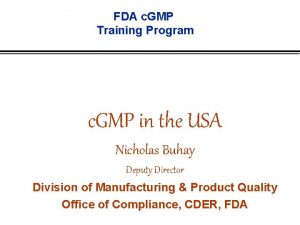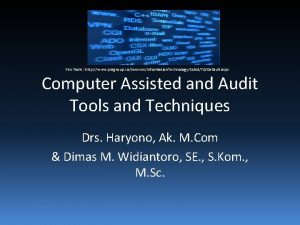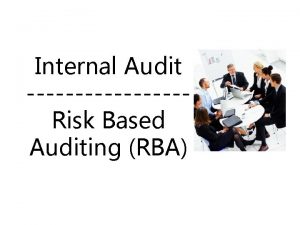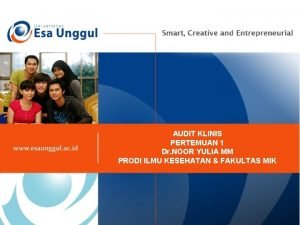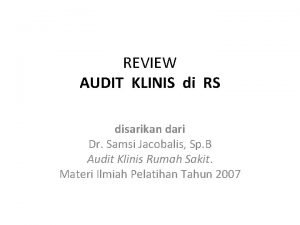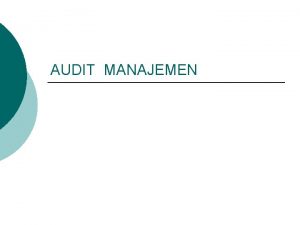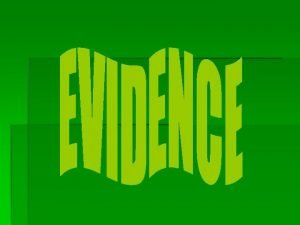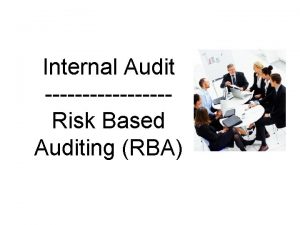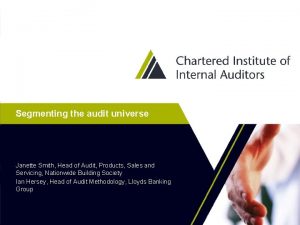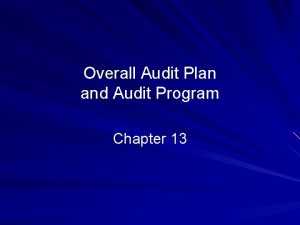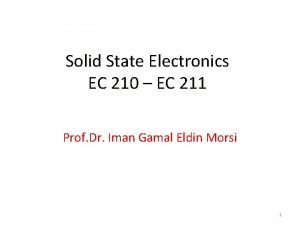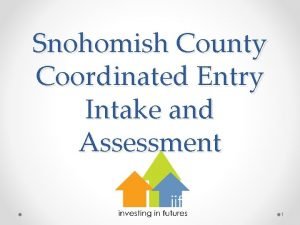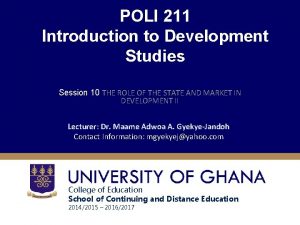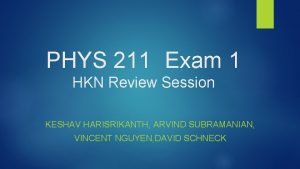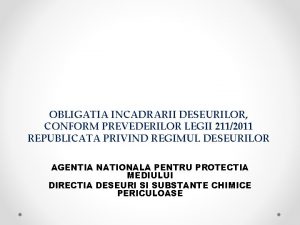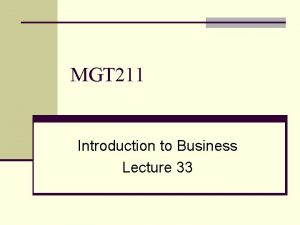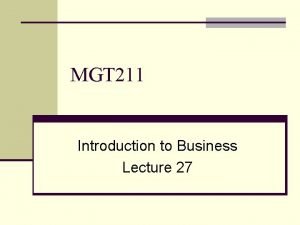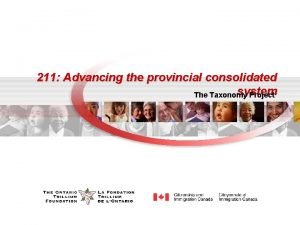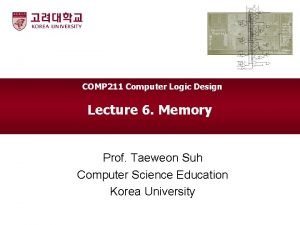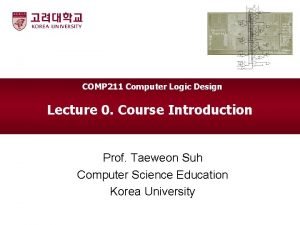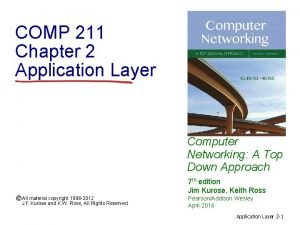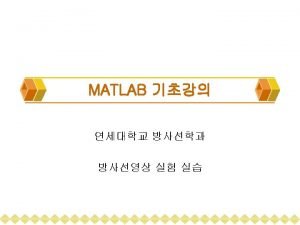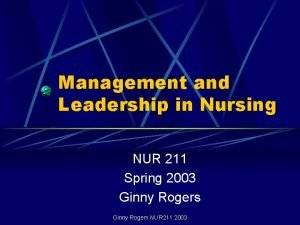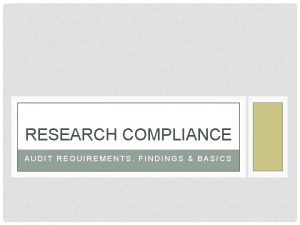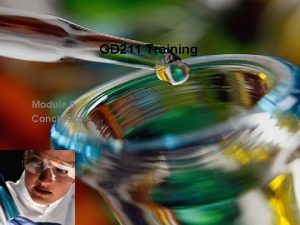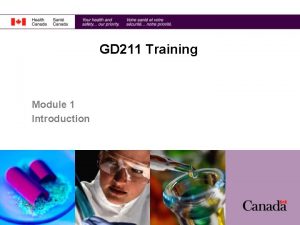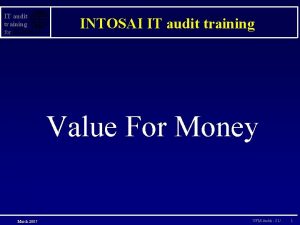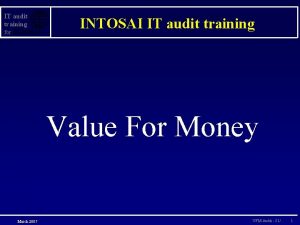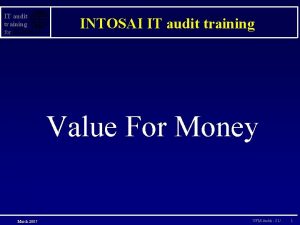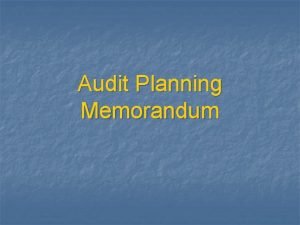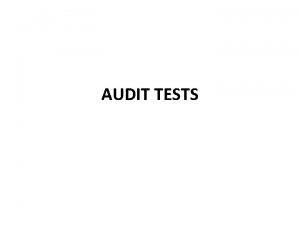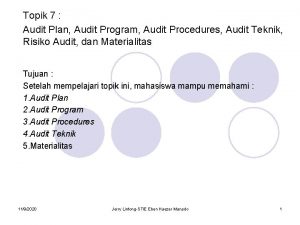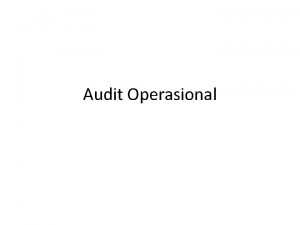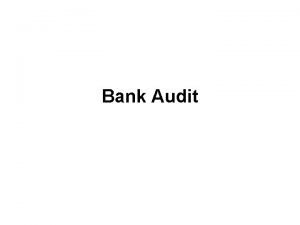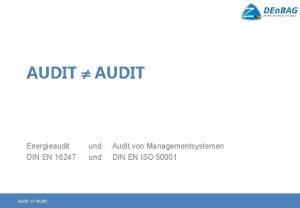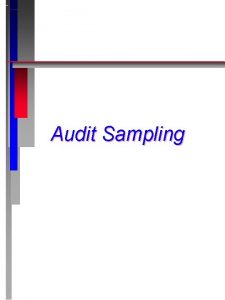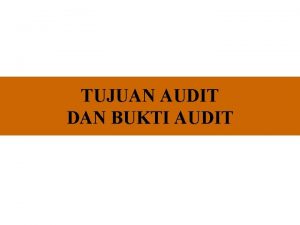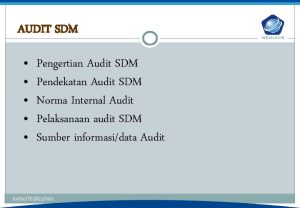GD 211 Training Module 4 Audit Findings Overview
































- Slides: 32

GD 211 Training Module 4 Audit Findings

Overview Audit Findings Audit Summaries Description of Major Changes Obstacles Follow-up of Past Nonconformities Areas not Audited

Audit Findings The audit report should include sufficient findings to support the audit conclusions (both positive and negative). Findings should be put into context and supported by objective evidence.

Audit Findings The principles of fair presentation and positive reporting should be used throughout the report. Therefore, an area/requirement not mentioned is deemed to be an area/requirement not audited.

Audit Findings Reports should not contain opportunities for improvement, including specific advice, instructions or solutions towards the development and implementation of a Quality Management System (QMS). It is nonetheless important for auditors to report observations and findings. Observations can include situations which appear to be non-conforming but where insufficient audit evidence was collected.

Audit Findings In this context, observations should not be confused with Observations to be listed on a United States Food and Drug Administration (FDA) Form 483; these would be nonconformities. The observations in question here are observations of questionable significance that would nonetheless be discussed with management.

Audit Findings Observations should be reported in a factual manner without suggesting that any action is required by the auditee. Examples: (See Study Guide for further examples) “There is no direct link between the OEM lot number and the lot number assigned by receiving in the Device History Record. A lookup table of receiving records must be used to trace parts back to the OEM lot number. ”

Audit Findings “The distribution agreements do not stipulate the frequency at which distributors must send copies of distribution records to the manufacturer. The agreements only mention that it must be done. ” “SOP <XX-XXX> requires that operators cut the catheter to a length between 14. 961 and 15. 157 inches. The design specification is for a length of 15. 1 ±. 1 inches. The measurement acuity of the rulers provided is 0. 05 inches. ”

Audit Summaries (2. 3. 3 a) Written summaries of the audit of each QMS process or activity audited should be included in the report. Summaries should be arranged by audit topic or QMS process. There are many ways to do this, such as: - by QMS process as identified by the auditee - by section of the standard - by subsystem

Audit Summaries (2. 3. 3 a) Audit summaries should be written in such a way as to naturally lead to audit findings as their conclusion. Context Criteria Evidence + Evaluation = Finding

Audit Summaries (2. 3. 3 a) Audit summaries should be brief but nonetheless include the following: i) description of the QMS process or activity audited ii) area (physical or organizational) of the site visited

Audit Summaries (2. 3. 3 a) iii) name and title of persons interviewed iv) key documents reviewed (procedures, work instructions, etc. ) v) type and number of records reviewed, including a qualitative statement of the sample size where appropriate

Audit Summaries (2. 3. 3 a) vi) identification of products or components reviewed vii) statements regarding the conformity of the activity or process under audit to the audit criteria. The inclusion of clause numbers in the concluding statements can help demonstrate appropriate coverage.

Audit Summaries (2. 3. 3 a) Example: Process Name Internal Quality Audits (IQA) Relevant Criteria ISO 13485: 2003 clause 8. 2. 2 Area Visited Quality Assurance dept. , also Management Key Management Interviewed <Name>, Quality Assurance Manager <Name>, Vice President Operations

Audit Summaries (2. 3. 3 a) Key Documents/ Information Reviewed P-IQA-01 Rev. 2 – Internal Audit Procedure Internal audit programme 20082009 Internal audit report for 2008 Product/Components Reviewed Not applicable (N/A)

Audit Summaries (2. 3. 3 a) Description/ Internal audit objectives are set annually by Findings the Vice President Operations <Name> based on business and quality objectives. Responsibility for developing and implementing the audit programme rests with the Quality Assurance Manager. An audit programme was developed for 2008 -2009 which included objectives related to review of progress on wastecutting measures and implementation of new electronic records system.

Audit Summaries (2. 3. 3 a) The 2008 audit was performed Oct. 6 -9 by <Name> who works in receiving and is suitably trained (ISO 9001 course (BBI), 13485: 2003 course by Med. For Academy, CMED consultants MDR training) to perform internal audits. The audit report was reviewed and met the programme objectives as well as requirements of 13485. Findings were well articulated and supported by objective evidence.

Audit Summaries (2. 3. 3 a) The report was formally presented to the Chief Executive Officer and Vice President Operations during the last Strategic Review and Planning (management review) October 27 th. All nonconformities issued during the IQA were entered into Cap. Track for timely resolution (5 of 7 closed at date of this audit).

Audit Summaries (2. 3. 3 a) The internal audit process appears to be robust and to be well-tailored to the company’s business and quality objectives. The output of this process is judged to be reliable. Conclusion The IQA is in full conformity with the requirements of 13485.

Description of Major Changes (2. 3. 3 b) When the activity or process being audited has been subject to any change that is likely to affect product conformity with specified requirements or the ability of the QMS to conform or to meet quality objectives, this should be described in the audit report. The description can be included in an audit summary or under its own heading or section.

Description of Major Changes (2. 3. 3 b) This includes major changes to products or processes, changes to the organizational structure or ownership, as well as changes to key personnel and facilities and to the QMS as a whole.

Description of Major Changes (2. 3. 3 b) Any description of major changes should include a discussion of the relevance of the changes to regulatory submissions (where appropriate).

Description of Major Changes (2. 3. 3 b) Examples: “<Company> has recently updated the software of the device from version 83. 6 to 84. The changes were made to address internal coding standards and nomenclature inconsistencies. As part of design review, the Engineering department concluded that this change did not affect the form or function of the device and therefore did not require a notification to any regulatory agency. ”

Description of Major Changes (2. 3. 3 b) “<Company> has undertaken a design change project to its balloon dilatation catheter <Model Number>. The company is in the process of validating new packaging and qualifying a new contract sterilizer for the devices. Company officials have stated that no licence amendment is planned for this device. A nonconformity was issued (see NC-01) as this is a significant change to a class IV medical device and requires a medical device licence amendment. ” See Study Guide for further examples.

Obstacles (2. 3. 3 c) The report should identify any obstacles encountered that have the potential to impact the validity of the audit conclusions.

Obstacles (2. 3. 3 c) Examples of obstacles include: - refusing to provide certain documents/records - refusing to answer certain questions - refusing access to certain areas - wilfully hampering/delaying the auditors - being uncooperative

Obstacles (2. 3. 3 c) Other situations that could impact the validity of the audit conclusions include: - certain manufacturing/processing activities not carried out during the audit - absence of key individuals - shutdowns

Follow-up of Past Nonconformities (2. 3. 3 d) The report should mention any verification of correction or corrective action stemming from past nonconformities. If the nonconformities cannot be closed, this should be indicated. This item can be included in the audit summaries or under a separate heading.

Nonconformities (2. 3. 3 e) For each nonconformity issued during the audit, the report shall include the following: - a statement of nonconformity - the criterion against which the nonconformity is raised - the supporting objective evidence Registrars are free to use additional reporting methods for nonconformities (for example NCR forms, etc. )

Nonconformities (2. 3. 3 e) The nonconformities and their discussion should be included in the audit summaries in order to provide context for the findings. Since nonconformities constitute an important class of audit findings, audit reports should provide adequate supporting evidence in relation to these.

Nonconformities (2. 3. 3 e) Any unresolved objections from the auditee with respect to the issued nonconformities should be recorded in the audit report. Although auditees may undertake correction and corrective action to discharge nonconformities prior to the closing of the audit, all issued nonconformities need to be reported.

Areas not Audited (2. 3. 3 f) When areas within the scope of the audit (as defined in the audit plan) are not audited or not sufficiently covered, this should be noted in the audit report.
 21 cfr 211 training requirements
21 cfr 211 training requirements C device module module 1
C device module module 1 Pragrup
Pragrup Perbedaan audit konvensional dengan audit berbasis risiko
Perbedaan audit konvensional dengan audit berbasis risiko Audit klinik adalah
Audit klinik adalah Beda audit medis dan audit klinis
Beda audit medis dan audit klinis Penyelesaian audit dan tanggung jawab pasca audit
Penyelesaian audit dan tanggung jawab pasca audit Konsep dasar audit manajemen
Konsep dasar audit manajemen Perbedaan prosedur audit top-down dengan bottom-up
Perbedaan prosedur audit top-down dengan bottom-up What is vouching
What is vouching Perbedaan audit konvensional dengan audit berbasis risiko
Perbedaan audit konvensional dengan audit berbasis risiko Audit comes from the latin word
Audit comes from the latin word What is an audit universe
What is an audit universe Overall audit plan and audit program
Overall audit plan and audit program Opwekking 211
Opwekking 211 Miller indices 211
Miller indices 211 Coordinated entry snohomish county
Coordinated entry snohomish county Poli 211
Poli 211 Physics 211 exam 1
Physics 211 exam 1 Legea 211 2011
Legea 211 2011 Mgt 211
Mgt 211 Luyana211
Luyana211 Is 211 nationwide
Is 211 nationwide Csce 211
Csce 211 211 la taxonomy
211 la taxonomy Trigo variedad jacaranda
Trigo variedad jacaranda Csce 211
Csce 211 Comp 211
Comp 211 Comp 211
Comp 211 Comp 211
Comp 211 211 org md
211 org md Subplot 211 matlab
Subplot 211 matlab Nur 211 final exam
Nur 211 final exam
